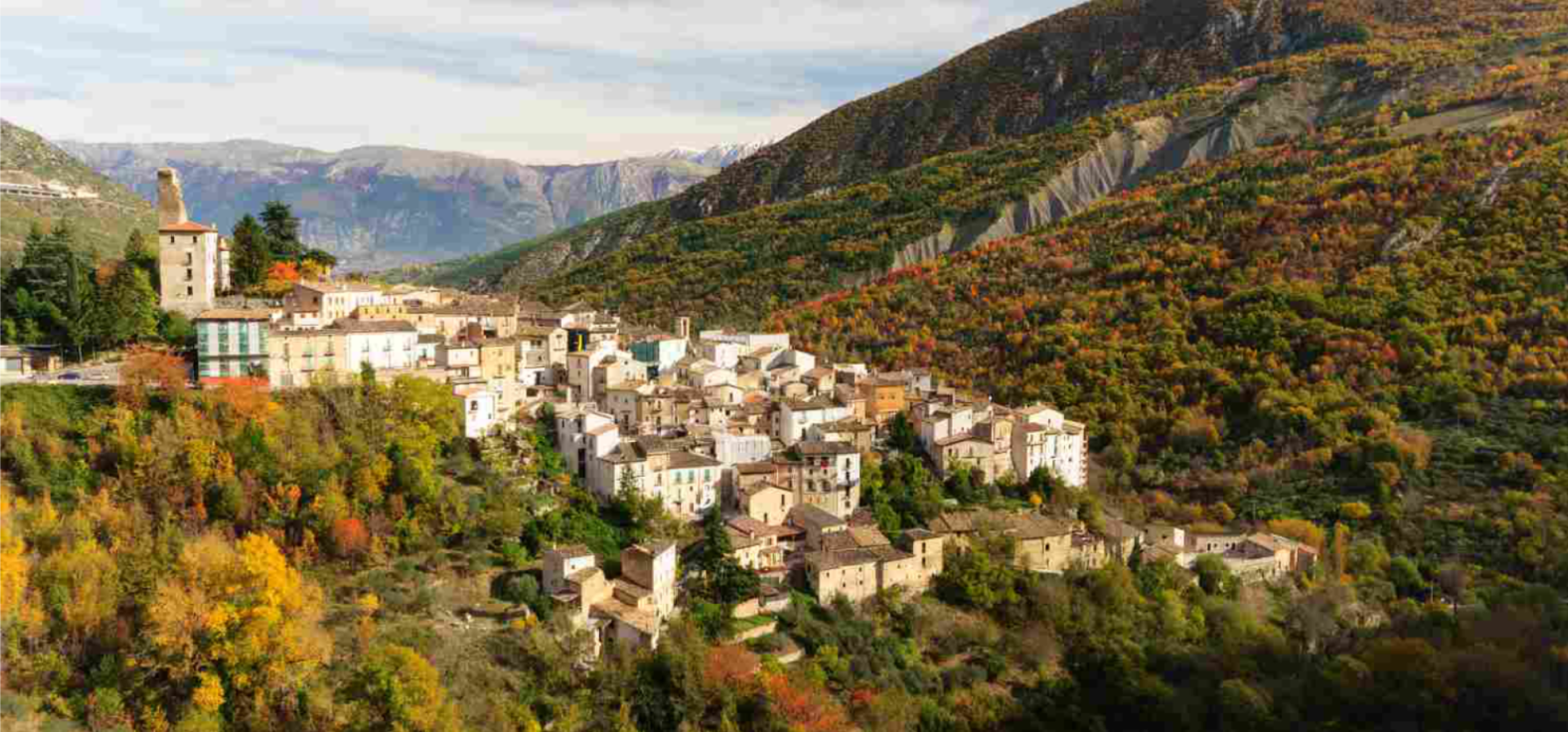Abruzzo’s villages are a true exploratory mystery, the area is rich in history set among the green slopes of the land, not surprisingly also called the Green Region of Europe. In fact, in this region we find three National Parks, one Regional Park and 38 regional and state oases and reserves. In total, protected areas in Abruzzo account for about 30 percent of the entire regional territory.
The Architecture of the villages is perfectly set in the green of the territory and is characterized by a housing sedimentation in the form of a halo where at the center as per the practice dating back to the ‘ancient Middle Ages opens a “widening” later referred to as the Square. The core that was formed around the squares in the Middle Ages inevitably represented the center of gravity of city development, from there the rows of streets moved and consequently the buildings of greater importance were placed from the Churches and the Town Hall, to the Noble buildings and gradually the buildings of lesser prestige.
The dwellings in prevalence are adjacent to each other alternated by alleys or “ruelle,” small passages that cross the village in a transversal manner; In the elevation the spaces are distributed on the 3 or 5 levels of small square footage, the walls are made of stone with floors made of girders (wooden or iron beams ) and brick vaults or alternatively with vaulted roofing, the internal distribution is usually divided by floors from the ground floor used as a kitchen up to the upper floors with living room and bedroom.
As far as villages are concerned, Abruzzo ranks No. 2, with its 22 villages for the association the “Most Beautiful Villages in Italy,” a private association that promotes small Italian towns that have the qualification of “outstanding historical and artistic interest.”
Among the main Villages we can certainly mention:
The village of Anversa degli Abruzzi

Territory of the Peligna mountain community is home to the Sagittario Gorge Nature Reserve. Starting from the historic center with the Church of Santa Maria delle Grazie, originally from the 16th century, with its Renaissance limestone portal dated 1540, and the splendid rose window from 1585, ascending the narrow streets leading to the ruins of the Norman castle, destroyed in the 1706 earthquake, is the Belvedere over the Sagittario Gorges.
The village of Santo Stefano di Sessanio

Built of white limestone located in the southern part of the Gran Sasso National Park, the name comes from a corruption of Sextantio, a small Roman settlement located near the present town. The symbol of Santo Stefano di Sessanio is the watchtower, erroneously called the Medicean Tower, located at the top of the village, from the top of which there is an extraordinary panorama that embraces the Tirino valleys.
The village of Crecchio

A Medieval village dominated by the Ducal De Riseis-D’Aragona Castle, it rises in the area that stretches from the Maiella Mountains to the Adriatic Sea. Small but rich in historic dwellings. Among the village’s most important buildings are certainly the church of Santa Maria da Piedi, located near the Porta da Piedi, from which it takes its name, which is now deconsecrated and used as an auditorium; the church of Santissimo Salvatore, halfway between the Castle and the church of Santa Maria da Piedi, with its facade in sober Baroque style; and the Sanctuary of Santa Elisabetta, which stands a short distance from the historic center, inside which is preserved a 15th-century statue of the saint and some ex votos from the 19th century.
